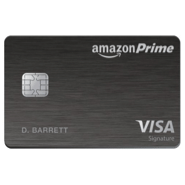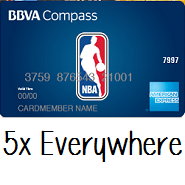Now that RadPad is back and codes as travel, using Apple Pay at least, I thought it would be useful to explore how you make a profit when the processing fee percent is close to the percent you get back in rewards. I imagine that many readers have already considered the facts laid out in this post, but I hope others will find it useful. The basic thrust is that you earn more cash back than you’d expect because you earn cash back on the processing fee in addition to the purchase.
RadPad charges a processing fee equal to 2.99% of rent and the Chase Sapphire Reserve yields 3x Ultimate Rewards (UR) on travel, which is how a RadPad payment can code. The most obvious ways to profit in this scenario are using the travel credit (assuming you wouldn’t otherwise), or if the reward percent is much higher than the processing fee. As an example of the latter case, if you value UR at 1.5 ¢ / point, that converts 3x UR to 4.5% cash back. Against a 2.99% processing fee, this obviously presents a very clear profit.
On the other hand, if we use the UR for a statement credit, they are worth 1 ¢ / point, which converts the 3x UR to 3% cash back. Because RadPad charges a 2.99% processing fee, the cost is 2.99%. At first blush, 3% cash back would seem to mean that you get only +0.01% cash back by using the CSR.
However, this doesn’t take into account the fact that you earn 3% cash back on the 2.99% processing fee as well. 3% of 2.99% is an additional 0.0897% cash back. Including the 0.01% difference between the processing fee and cash back on the rent, this means you actually profit 0.0997% (or, 0.1%). (The cost is 2.99% of rent while you earn 3% cash back on 102.99% of rent—equivalently, you earn 3.0897% cash back.)
While the profit is still incredibly minor ($9.97 per $10,000 as opposed to $1 per $10,000), some people may consider this worth it if they can’t earn anything else on rent (or have an extremely high rent).
This fact also increases our profit when considering higher valuations of UR—instead of profiting +1.51%, you profit 1.64455% (or, +1.645%). (An additional profit of $13.45 per $10,000.)
This also holds when paying taxes with a credit card (a 2% card). A processing fee of 1.87% equals a profit of 0.1674% as opposed to 0.13%. (An additional profit of $3.74 per $10,000.) Because both the rewards (2%) and the processing fee (1.87%) are lower than our RadPad example, the difference is much smaller.
We can even use this to find that the break-even processing fee for a 2% rewards card is 2.04%. (In words, 2% of the purchase plus 2% of the purchase’s processing fee minus the processing fee is the break-even point. Denoting the processing fee by x, we use 0.02 * (100 + x) – x = 0. Thus, 2 + 0.02x – x = 0, which leads to –0.98x = –2, which leads to x = 2.0408%.)
To explicitly state the general solution, your cash back percentage is [% rewards – % fee] + [% rewards * % fee]. As should be clear from the examples above & the equation here, higher % rewards and higher % fees can create a substantial difference in your actual rewards, especially when the difference in % rewards and % fee is very small (such as the 2.99% and 3% example).
Questions, comments, etc. can be dropped below!







24K YR rent + fees= lots of UR points coming this way
Well, maybe it’s just me but for such a small margin I would just use my checking account/debit card directly. It’s just not worth the hassle. The only reason I would do this is to meet a spend requirement, but again that’s a much larger margin.
I disagree. You know at worst you can come out slightly ahead. At best you might be able to find much greater value than cash back in a travel partner. There is value in just having that option. If/When you need the cash back, you can just get a stmt. credit.
I think it depends on the person; many people will definitely find it not worth the hassle—especially those who don’t have much rent or are coasting on Plastiq promos 🙂
For people in very high rent areas, though, it can be awesome. If your Bay Area landlord wants 1 check for $8,000 every month and all your roommates reimburse you…well, at worst you walk out ahead $95.71 in a year. And if you get 4.5% in equivalent cash back…well, you’re ahead $1,578.77. So knowing that you can come out ahead no matter what can be valuable 🙂
Doc can you give us an SPG example since it probably most used and least understood
Unfortunately, the SPG is very, very hard to compare because it’s entirely situation-dependent as to what value you’re getting from it (and there are many situations because of the hotels and the multitude of transfer partners). The cpp at which you value SPG points converts it to {your cpp}% back, but each person’s valuation can be quite different.